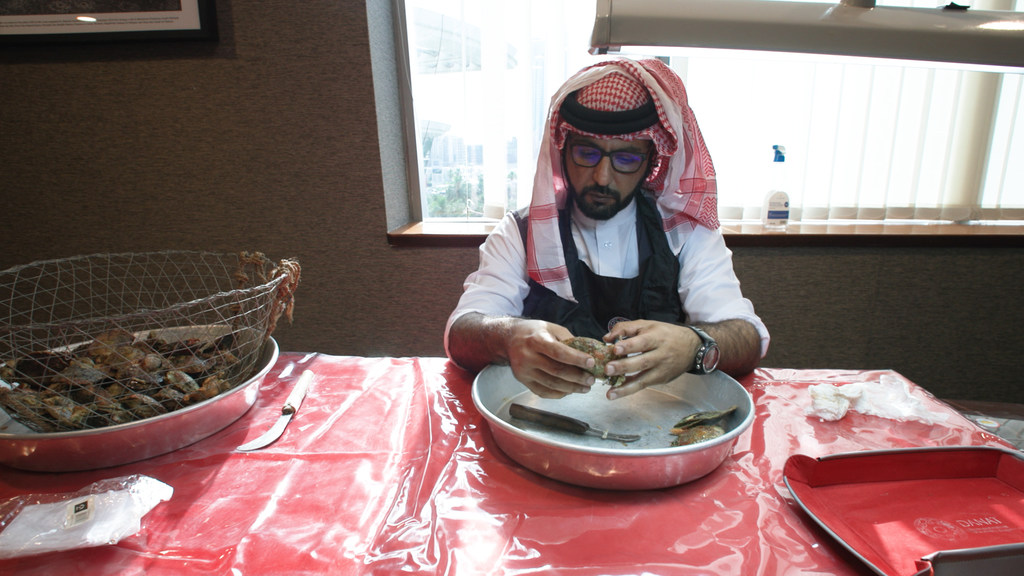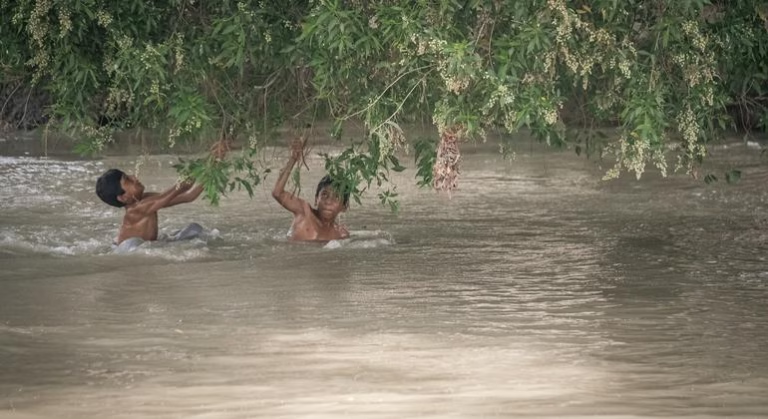Mr. Alslaise is dedicated to preserving and revitalizing this ancient tradition, noting that many Gulf families have at least one member who was involved in pearl diving or contributed to the industry in some way.
Pearling was a cornerstone of Bahrain’s economy for centuries but faced a sharp decline after Japan perfected cultured pearls in the 1930s, following a peak around the turn of the 20th century.
UN News spoke to Khaled Salman, a diver since the 1970s, who explains that while diving continues, it is no longer practiced in the traditional way.
 Bahinai diver, Mohamed Alslaise extracting pearls from oysters.
Bahinai diver, Mohamed Alslaise extracting pearls from oysters.
Alsayli adds, “Nowadays, larger quantities are extracted due to advancements in technology, allowing divers to stay underwater for longer periods. In the past, a diver would stay underwater for four minutes, but now scuba divers can remain underwater for an hour or more.”
Salman notes, due to lower pearl prices, “Many people don’t sell the pearls they extract; they store them until prices rise and then sell them to traders in Bahrain.”
He also points out three types of pearls: synthetic, cultured, and natural, adding that “distinguishing between these types requires experience and modern equipment.”
The decline in pearling also affected Bahrain’s shipbuilding industry. Abdulla, a seasoned designer of wooden ships and boats, shares, “Bahrain is famous for its shipbuilding industry, which was closely tied to pearling.” He notes a reduction in ship sizes due to decreased demand.
The wood for these ships is sourced from Africa and Singapore, and according to Abdulla, a ship’s lifespan can exceed 100 years.
 Abdulla, a designer of wooden ships and boats for over 35 years.
Abdulla, a designer of wooden ships and boats for over 35 years.
Folklore, songs, and tradition
“Most Bahraini traditions are connected to the pearl diving industry. For instance, the pearl diving songs,” says Mr. Alslaise. “The folklore of pearl diving has been passed down for generations. We still sing the same songs, which were originally sung to boost morale on the boats.”
 A band performing a pearl diving song in Bahrain.
A band performing a pearl diving song in Bahrain.
Bahrain’s historic pearling site, known as the Pearling Path, has been inscribed as a World Heritage Site by UNESCO. The site showcases the pearling tradition and the wealth it generated in the Gulf region for millennia.
The location, which includes 17 buildings in Murharraq city, offshore oyster beds, and part of the seashore among other components, is recognized as a testament to the pearling tradition and its economic significance in the period before Japan’s development of cultured pearls.
Pearling is back
“I am one of the people who fell in love with pearl diving without any guidance from my parents or family,” Mr. Alslaise says. “The generation before us was not allowed to dive when they were young because, after oil was discovered, all the jobs shifted to the oil industry.”
According to Mr. Alslaise, since 2017, when Bahraini authorities introduced pearl diving licenses, many people without prior knowledge of pearl diving have signed up.
“Now, seven years down the line, many Bahrainis have reconnected with this heritage. Over 1,000 divers are now registered and dive regularly to create an income for themselves.”
Source: https://news.un.org/feed/view/en/story/2025/03/1160491








